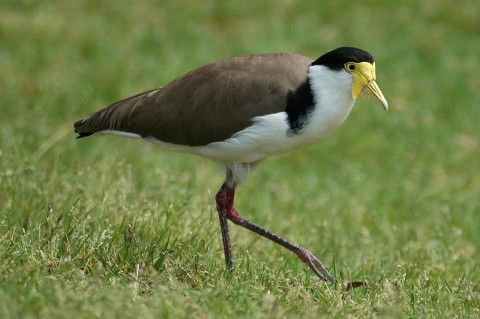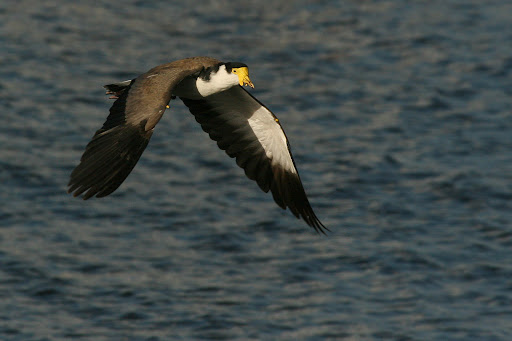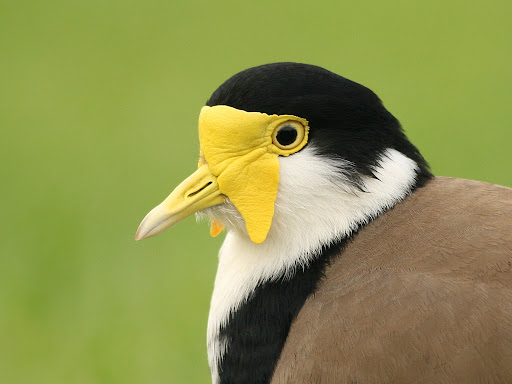Banded Lapwing Biography
Sometimes the Banded Lapwing occurs in habitats that seem particularly inhospitable. They are often seen far from the nearest cover, in paddocks with sparse, short grass, on farmland that has been overgrazed or ploughed, on stony ground, or the bare, dry mud at the edge of swamps. This lack of vegetation assists lapwings when they are foraging, as rank cover would impede their movement and ability to search for food. They forage on the ground, taking seeds and invertebrates, which are pecked from the surface of the soil.

 Banded Lapwing
Banded Lapwing Banded Lapwing
Banded Lapwing Banded Lapwing
Banded Lapwing
 Banded Lapwing
Banded Lapwing

Sometimes the Banded Lapwing occurs in habitats that seem particularly inhospitable. They are often seen far from the nearest cover, in paddocks with sparse, short grass, on farmland that has been overgrazed or ploughed, on stony ground, or the bare, dry mud at the edge of swamps. This lack of vegetation assists lapwings when they are foraging, as rank cover would impede their movement and ability to search for food. They forage on the ground, taking seeds and invertebrates, which are pecked from the surface of the soil.
The Banded Lapwing is a large plover with a broad black breast band and white throat. The upperparts are mainly grey-brown with white underparts. There is a black cap and broad white eye-stripe, with a yellow eye-ring and bill and a small red wattle over the bill. The legs are pinkish-grey. These lapwings have an upright stance and a slow walk, breaking into a faster trot when alarmed. They fly with quick, clipped wing-beats - giving them the name 'lapwing'.
The Banded Lapwing is much smaller than the Masked Lapwing,Vanellus miles, with a longer tail and shorter legs. The u-shaped breast band i Banded Lapwings are endemic to (found only in) Australia in the east, south and west of the mainland and in Tasmania
Banded Lapwings prefer open, short grasslands such as heavily grazed paddocks, agricultural lands and saline herblands in dry and semi-arid regions. Banded Lapwings chase insects with short runs and darts and may eat seeds in dry times. They prefer areas with very short grass, to find insects, worms, spiders and molluscs (snails and slugs).
Banded Lapwings need rain before breeding. The nest is a scrape on the ground, lined with dry grass and even sheep droppings. The eggs and chicks are speckled and well-camouflaged. They freeze and keep quite still at sign of danger. The parents defend their nest and young with great courage and will fly at human intruders, often with a distraction display, pretending to drag a broken wing.
Banded Lapwing

Banded Lapwing



Banded Lapwing


Banded Lapwing
Banded Lapwing
Masked Lapwing eating ants
Newborn Masked Lapwing Chicks
No comments:
Post a Comment